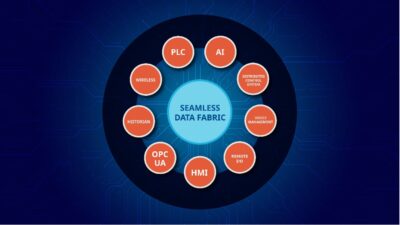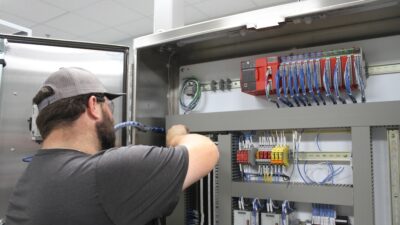Process control systems: A distributed control system (DCS) should help users innovate with greater automation system usability and functionality.

Releasing new versions of a distributed control system (DCS) requires innovation; not just iteration. For the latest version of DCS, the mission was even deeper, with a goal to redefine the DCS and change expectations for an automation system in terms of usability and functionality and help engineers across the globe advance their organizations’ goals more easily.
Continually achieving innovation requires touching the core of a person’s engineering identity and the customer’s identity. Redefining the identity of DCS hardware and software has always been about making it easy for the user because easy matters.
Control system innovation
For organizations looking to innovate, consider these suggestions:
- Easier is not always easy enough: Engineers spend hours integrating control systems on projects across the globe to connect systems together. And this work is even harder if an engineer has to re-engineer a product to do something it should do out of the box. Easy software should be intuitive with out-of-the-box functionality that reduces initial work.
With that mentality, we continually challenge ourselves to explore how our products can help engineers provide even more value to optimize their organizations. Our design engineers came up with native integration to ensure new technologies such as stand-alone controllers, mobile application software, and third-party programmable logic controllers (PLCs) required little or no re-engineering to connect with our DCS systems.
We took it a step further to reinvent our human-machine interface (HMI) into an HTML5-ready operations applications interface, combining different applications into one screen, making it intuitive for operators to easily reach the information they need. Product design is always about pushing the boundaries of better, faster, and easier. - Build on an existing innovation to extend value: In 2011, DCS electronic marshalling gained the flexibility to add I/O anywhere in the plant without affecting control room cabinet characterization modules (CHARMs). In 2016, smart commissioning capabilities were added. Both dramatically reduced schedule dependencies and hours of engineering and rework in capital projects. The latest DCS expands how customer organizations can use these technologies to positively impact projects and further reduce project schedules and costs.
- Reimagine preconceived notions: There’s long been a perception disconnect between the PLC and DCS in process industries. PLC is for smaller standalone systems that need simple control. DCS is for connecting the entire facility and providing advanced control. Re-imagining PLC and control system relationships allowed the design of a standalone controller with the footprint of a PLC, the power of a full DCS, and the ability to seamlessly merge into full plant systems. Innovation can emerge by re-examining old ideas.
- Product innovation is about today and tomorrow: This is particularly important in the rapidly-evolving era of the Industrial Internet of Things (IIoT), digital transformation, data analytics, and digital twins. It requires thinking ahead and anticipating how future technologies will impact users. For process control systems, that means embedding technologies such as Ethernet and OPC UA (from OPC Foundation) for interconnectivity. It’s about building a modular, scalable platform and can connect customers with capabilities they are just starting to tap into. That includes taking customers where they need to go, such as efforts underway to achieve ISA SSA Level 1 certification for an entire control system.
Thanks for collaboration
Control Engineering readers and other engineers at facilities and projects across the globe have inspired us to innovate and help us redefine the DCS. Thank you for working with us to address the process industry’s most critical needs.
Bob Halgren, DeltaV platform management director, Emerson. Edited by Mark T. Hoske, content manager, Control Engineering, CFE Media, [email protected].
KEYWORDS: Process control system, DCS design
Easy isn’t always easy enough.
Build on existing innovation.
Look at preconceptions, especially when considering tomorrow’s needs.
CONSIDER THIS
Will your process control system still enable innovation with tomorrow’s requirements?
ONLINE EXTRA
Emerson provides more information about DeltaV products below.
DeltaV Electronic Marshalling with CHARMs
See related New Products for Engineers at www.controleng.com/NP4E


